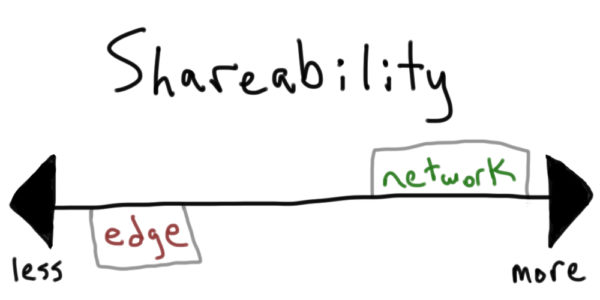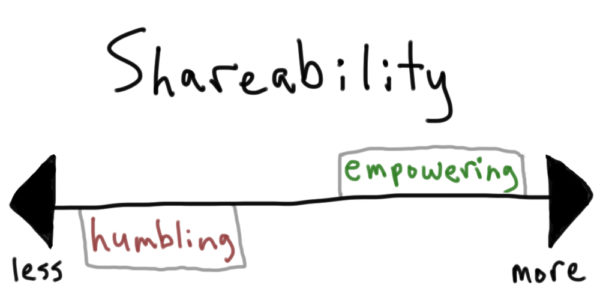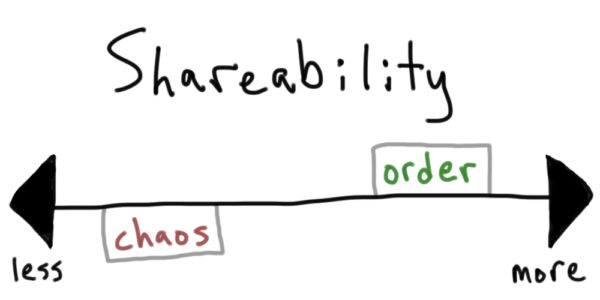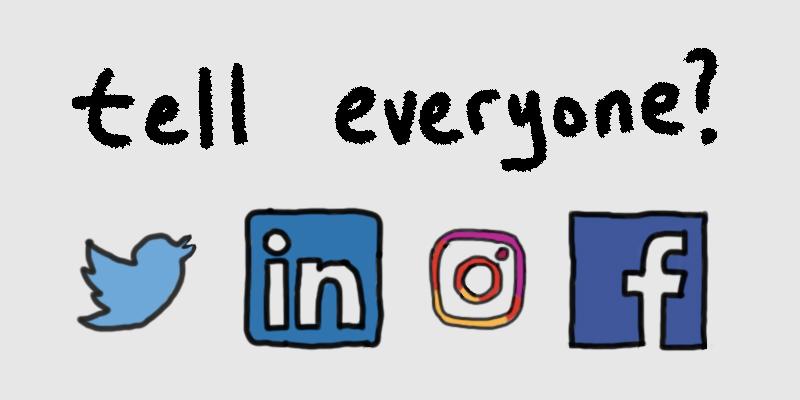my last essay broke down how i pre-sold $20,000+ in course sales with just a landing page, small mailing list, and 1 tweet.
in short, my course sold out because people shared it. but why did they share?
in this post i’ll explore the anatomy of a referral — recognizable patterns underlying products and services that get shared, vs those that don’t.
i’ve identified three “tests” you can run on your next project to gauge its share-ability and thus, the likelihood of a +/- 1.0 viral coefficient.
the quality paradox
six years ago i wrote “The Problem with Great Products,” a brief observation that when solutions provide a competitive edge, customers simultaneously love it and are less likely to refer other customers.
many B2B solutions share this challenge, especially as new products tend to serve hyper specific use cases. instead of sharing the email marketing tool i use because it “works well,” perhaps i discover a highly effective email marketing tool for subscription ecommerce post checkout up-sells. will i share that in a Facebook Group with my competitors?
examining this paradox through the lens of my course on how to buy small companies, a few things stand out:
- there are millions and millions of small companies
- knowing how to buy a company does not necessarily make you a competitor in the field of actually buying companies
- growing a company is hard, so even if you buy one it doesn’t mean you’ll be successful
in other words, my course does not fall prey to the quality paradox. a student who enrolls has ~nothing to lose by letting others know about it.

a simple heuristic by which to determine your project’s susceptibility to the quality paradox is to ponder the Network Effect: will my solution be more or less valuable, as more nodes are connected to it?
the polymath dilemma
a few months ago i enrolled in an online art school. specifically, a series of weekly lessons that teaches one how to draw.
while i’m not any good (yet), i’m enjoying the lessons and even bought a USB drawing tablet to make doodles for slide decks and blog posts like this one.
since drawing is not a skill i “need” to have in order to do my job as a marketer and manager, i don’t mind sharing far and wide that i’m enrolled in beginner drawing courses, or that i’m not very good at it.
on the other hand, if my copywriting was poor and i enrolled in a copywriting course to write better sales pitches, i may get value from it but i won’t tell my marketer friends.

the more standard deviations away a given skill is from the skills you need to be effective at work and life, the more likely you are to share that you’re learning it.
since most of my students are not finance or venture professionals, it’s not embarrassing to admit a “skill gap” in portfolio management. it is instead a humble brag to express interest in closing it.
the status flex
sadly, most people have money problems.
i won’t politicize this or comment on how to fix it. but it’s useful in understanding why my Micro PE course was shared freely, and other products aren’t.
sticking with the money example, suppose you’re in credit card debt. you’re serious about fixing it but seek guidance to do so effectively.
you might research and purchase a “debt relief framework,” trusted by thousands of former students and taught by a famous personal finance guru.
think — are you going to share on social media that you just enrolled in a “how to get out of debt” program? probably not.
now let’s switch gears to a course titled “How to buy, grow, and sell small companies.” what does enrolling in this course imply?
first, that you are not like most people, in that you do not have money problems. second, that you are in an even better position than most people: you have extra capital to invest!

we’re more likely to share our commitments and involvement in ideas that frame us as heroes than those that imply we have problems.
it’s the difference between telling a coworker you can’t go out Friday because you’re volunteering on Saturday morning vs can’t go out because you have an Alcoholics Anonymous meeting.
scoring your shareability
as you think about viable marketing channels for your next project, assign each of these tests a 1-5 score:
- quality paradox (does a customer benefit from having peers?)
- polymath dilemma (is the skill gap sufficiently abstract?)
- status flex (does it increase prestige?)
the closer you are to 15, the more likely word of mouth will be a predictable source of new business.
there’s nothing wrong with products that customers keep “secret,” maybe you can charge them more. there’s nothing wrong with selling debt relief courses, maybe you can keep a % of the savings. and there’s definitely nothing wrong with painkillers that requires a customer to admit they need help.
but the days of “build a referral link tool, and they will come” are over. we know better now.
